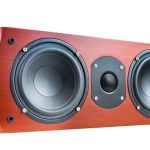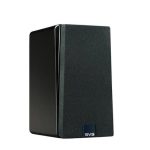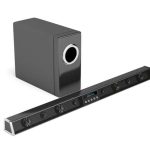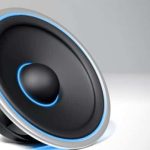It is undeniable fact that a center channel speaker is an important part of a home theatre system. This speaker is responsible for up to 70% of movie dialogue and music vocals. This percentage may even be higher in different setups.
Adding a dedicated center channel to your home theatre setup lets you enjoy a movie theatre experience in the comfort of your home.
When shopping for a center channel speaker, you may have come across different speaker configurations such as 2-way and 3-way center channel speakers. Ideally, manufacturers use these terminologies to indicate the number of drivers that come with the specific speaker. Each of these drivers has a specified frequency range that it handles.
All these terms might sound a little overwhelming, especially for first-timers. In this post, we will take a closer look at 2-way vs. 3-way center channel speakers and what to consider when choosing between the two.
| 2-way center channel speaker | 3-way center channel speaker |
| Two drivers | Three drivers |
| Narrow frequency range | Wide frequency range |
| Lacks midrange frequencies | Includes midrange frequencies |
| Requires a simple crossover | Requires a complex crossover |
| Relatively cheaper | More expensive |
What is a 2-way center channel speaker?
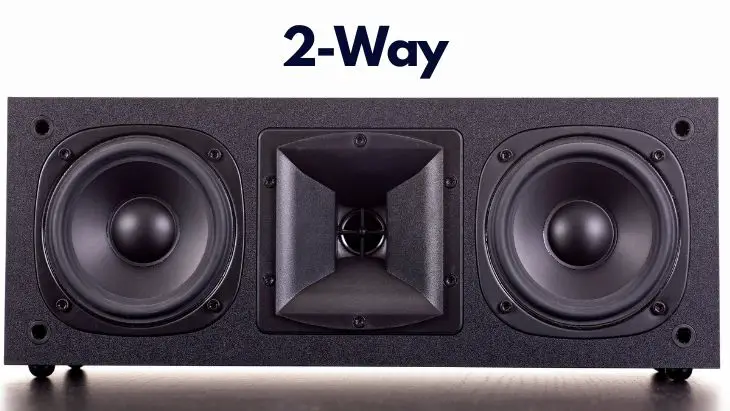
As you may have noticed, most center channel speakers are 2-way speakers. As the name implies, a two-way channel speaker comes with two drivers featured in the speaker. A typical 2-way center channel speaker has two drivers i.e., one woofer driver and one tweeter driver.
The woofer is tasked with the responsibility of reproducing bass frequencies. Lower frequencies need a large movement of air, which is better handled by the woofer.
On the contrary, the tweeter driver handles the high frequency sounds. And since these frequencies are characterized by a fast movement of air, the tweeter tends to be somewhat smaller in size than the woofer.
Advantages of a 2-way center channel speaker
- A two-way system is more affordable
- Fewer components translate to a compact unit
- It is easy to set up the crossover
- Presents a small footprint—it is an ideal setup if you have space limitations
Disadvantages
- It lacks the mid-range driver
- Limited sound range
- Less bass, but ideally, a center channel is not designed to reproduce a lot of basses
What is a 3-way center channel speaker?
Ideally, a three-way speaker is similar to a two-way speaker, but the former has a third driver added for the mid-range frequencies. This mid-range driver is comparatively larger than the tweeter but smaller than the woofer driver.
And just like in a two-way system, the woofer handles the lows while the tweeter handles the upper-frequency range. However, a third mid-range driver is added upon to produce the midrange sounds. This is arguably the most vital frequency range since it reproduces a majority of the most audible sounds, including the human voice.
One important thing that we’d like to note is that both 2-way and 3-way speaker systems are equipped with a crossover. A crossover network helps to break down the frequency into low, mid (3-way system only), and high frequencies.
Importance of crossover
The work of the crossover is to ensure that the lows are sent to the woofer, the high frequencies to the tweeter, and the mids to the midrange driver. In simpler terms, it splits the frequency range into its different component frequencies (lows, mids, and highs).
In order for you to prevent overlapping the frequency range, the crossover needs to be tuned properly. Without this, the frequencies may end up in the wrong place, causing muddied sounds.
Click here to learn about how to configure frequency crossover
Advantages of a 3-way center channel speaker
- The primary advantage of a 3-way speaker is its wide frequency range that can be optimized for your specific needs
- The sound is more defined since it covers the entire audible frequency range
- It tends to respond more accurately to movie dialogue
- Minimal distortion as long as the crossover is in place
- More bass output
Disadvantages
- It tends to be bulky
- A 3-way speaker is relatively more expensive than a 2-way speaker
- It requires a complex crossover
3-way vs. 2-way—Is a 3-way speaker better than a 2-way?
From the above discussion, it is natural to assume that since a three-way speaker has more components, it will sound better than a two-way speaker. However, this is not always the case. No doubt dividing the job between the three drivers should offer a better-sounding system, but there are other things that you need to consider.
For instance, you may want to consider the quality of the crossover and how well it is configured. The quality of the individual components and your application needs may also play a role when deciding on a particular speaker system.
For this reason, it is not uncommon to find a high-end 2-way center channel speaker that offers better sound reproduction than a cheaply made 3-way speaker system.
We hope that the information we’ve provided herein has given you a better understanding of 2-way and 3-way center channel speakers and how one speaker system is not essentially better than the other.
Michael Evanchuk is a San Francisco-based sound engineer with 20 years’ experience installing, troubleshooting, and repairing commercial, automotive, and household sound equipment. Evanchuk owns an auto stereo center, where he offers highly competitive car audio installation and repair services. He has written dozens of articles on different sound engineering topics, all of which have been published in leading journals, blogs, and websites.


